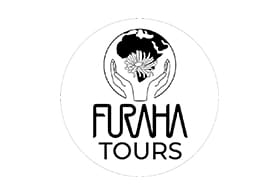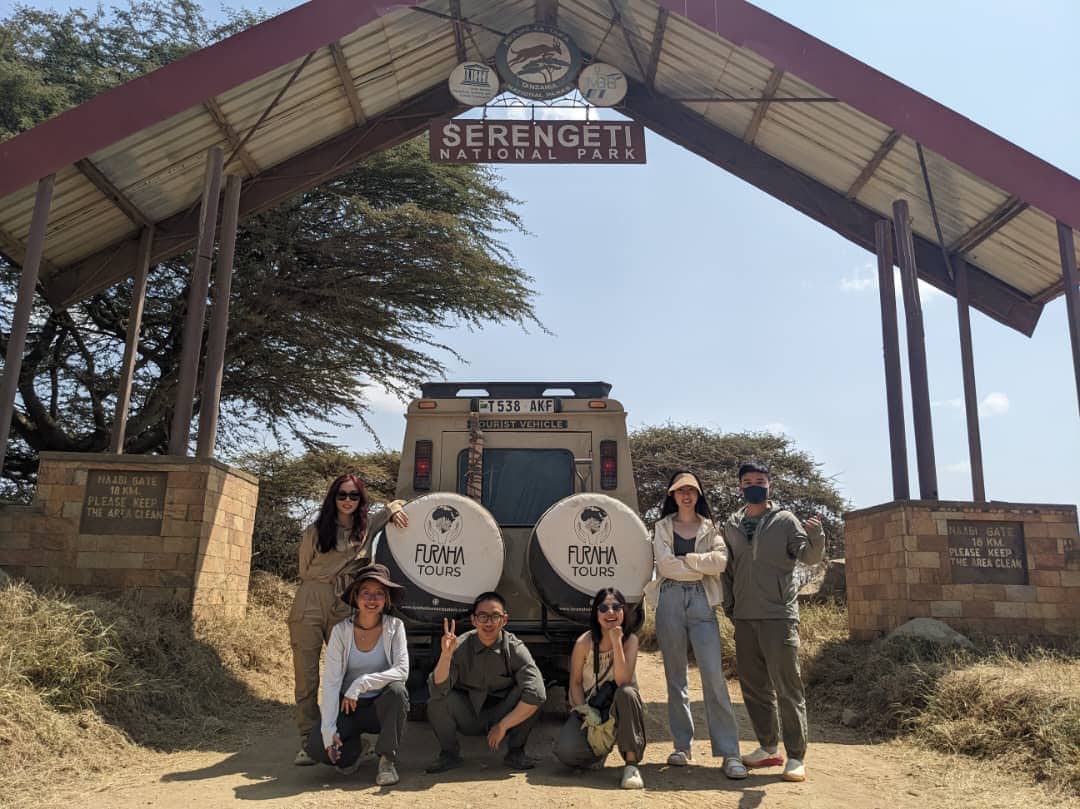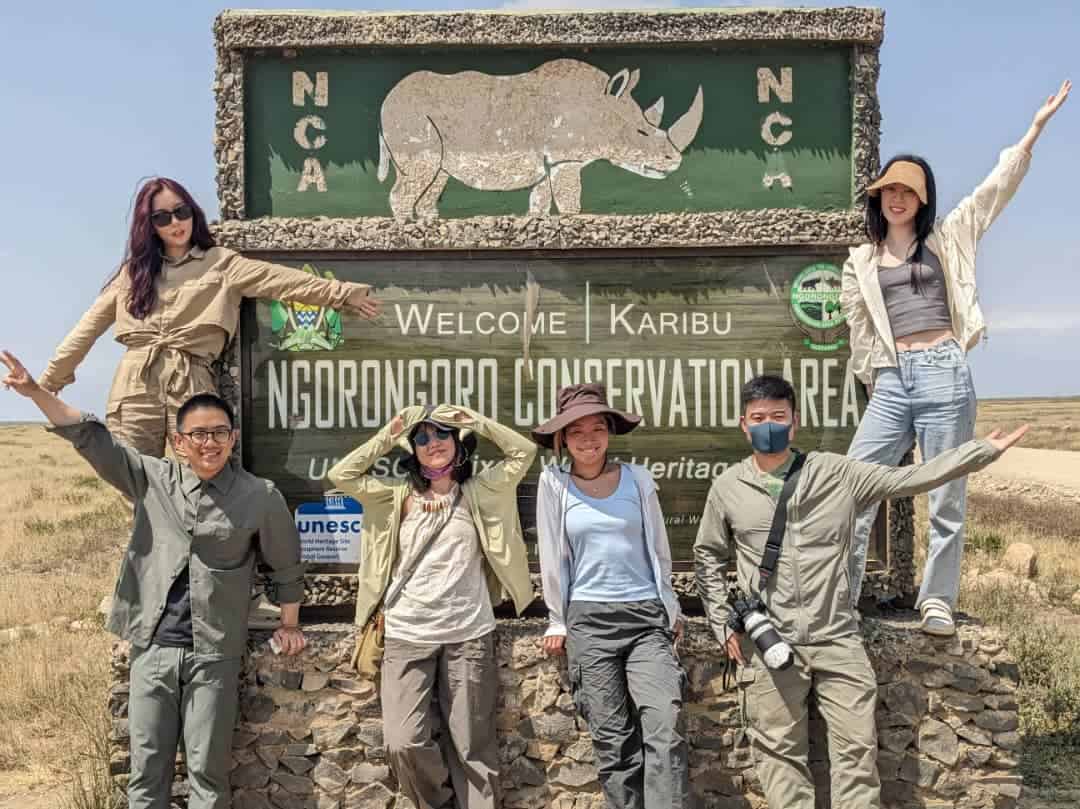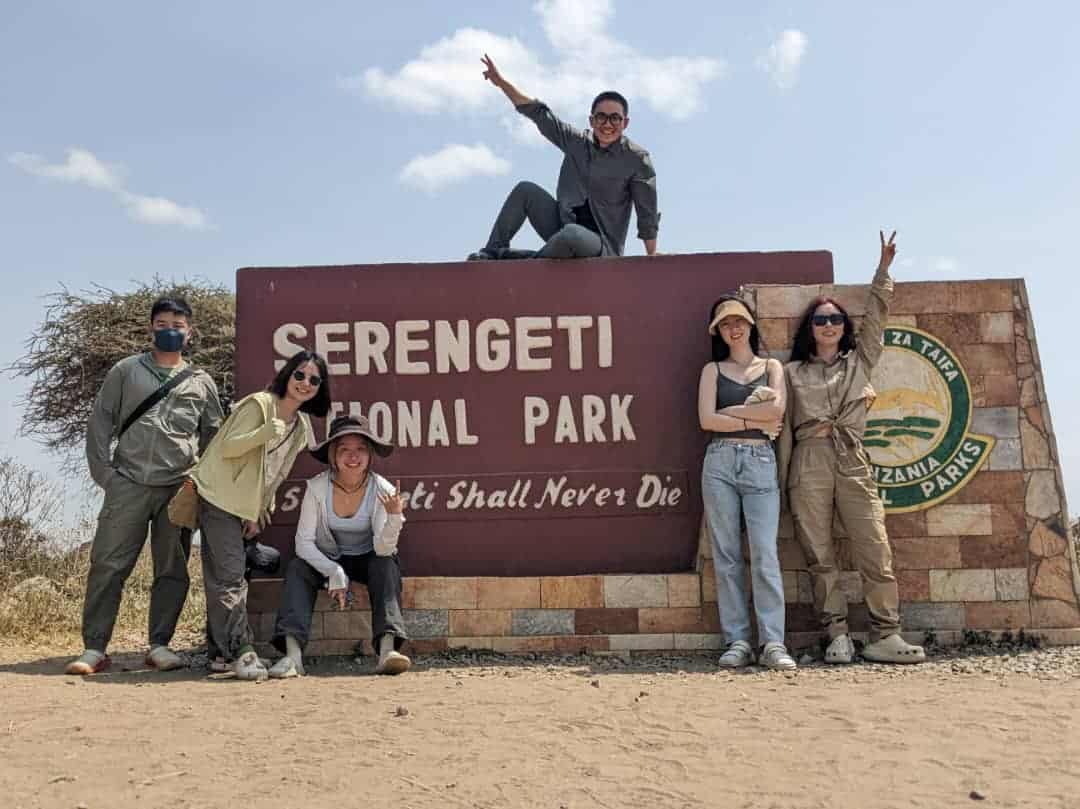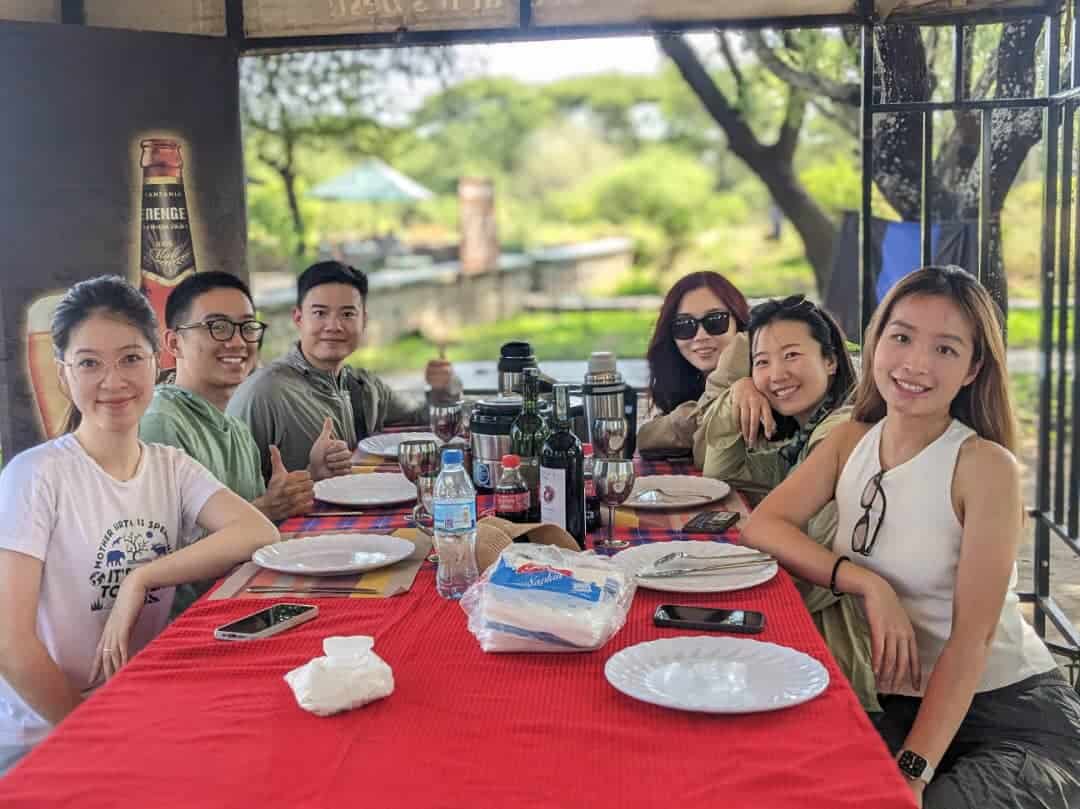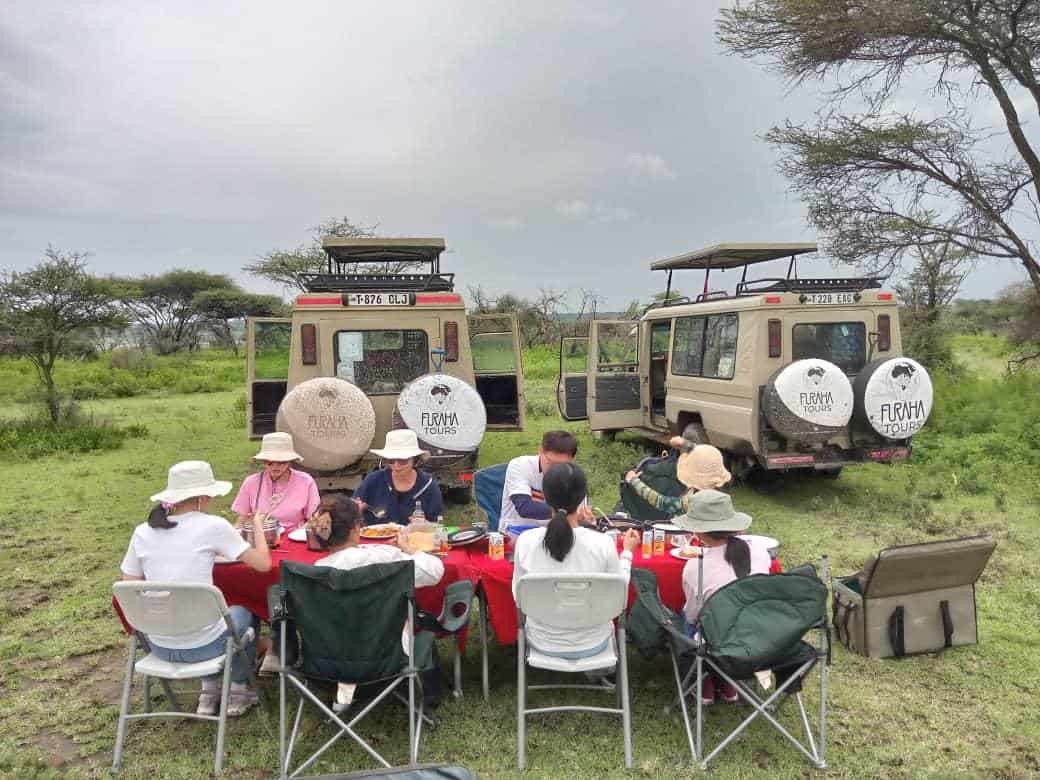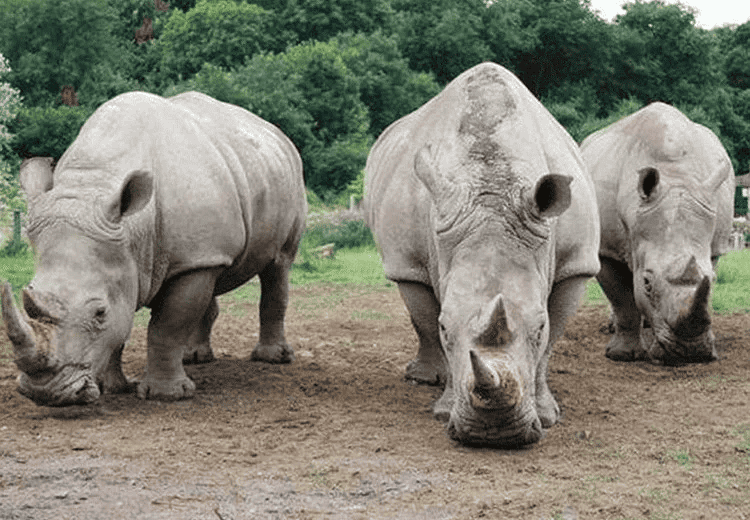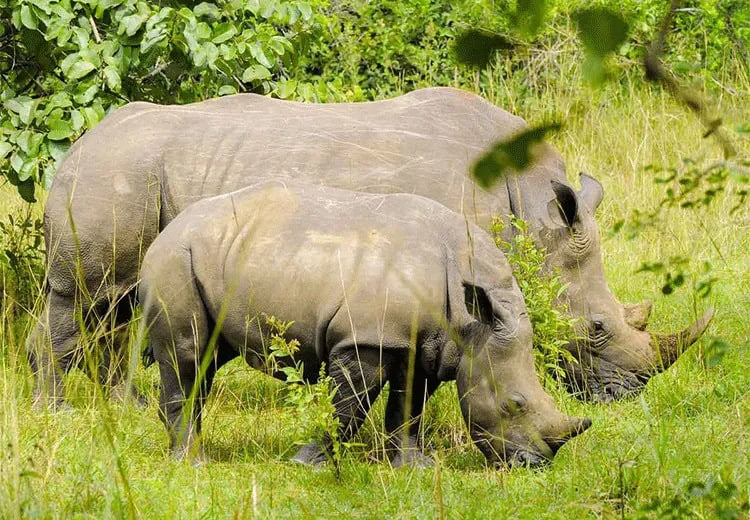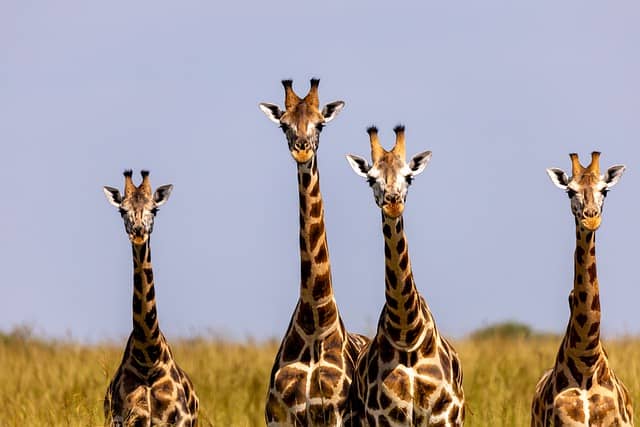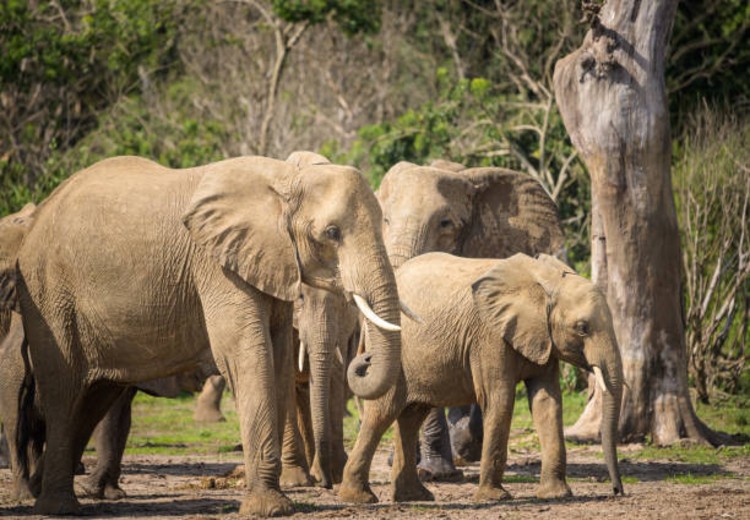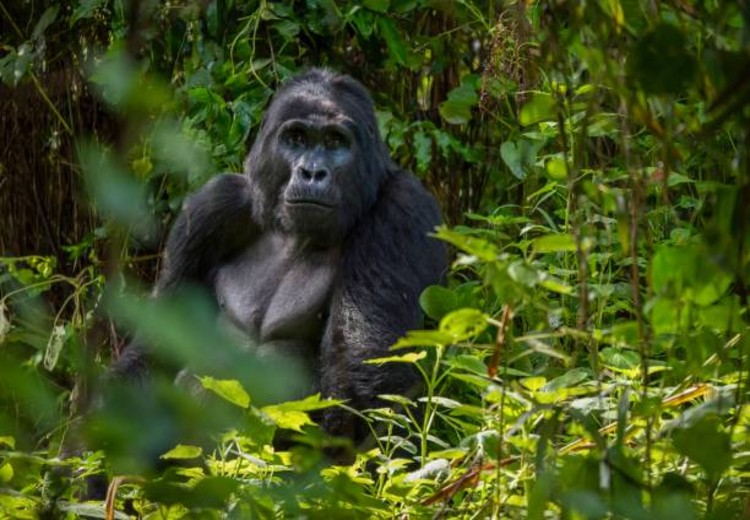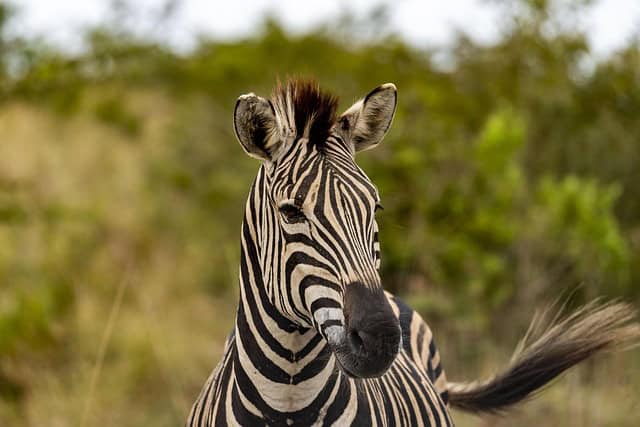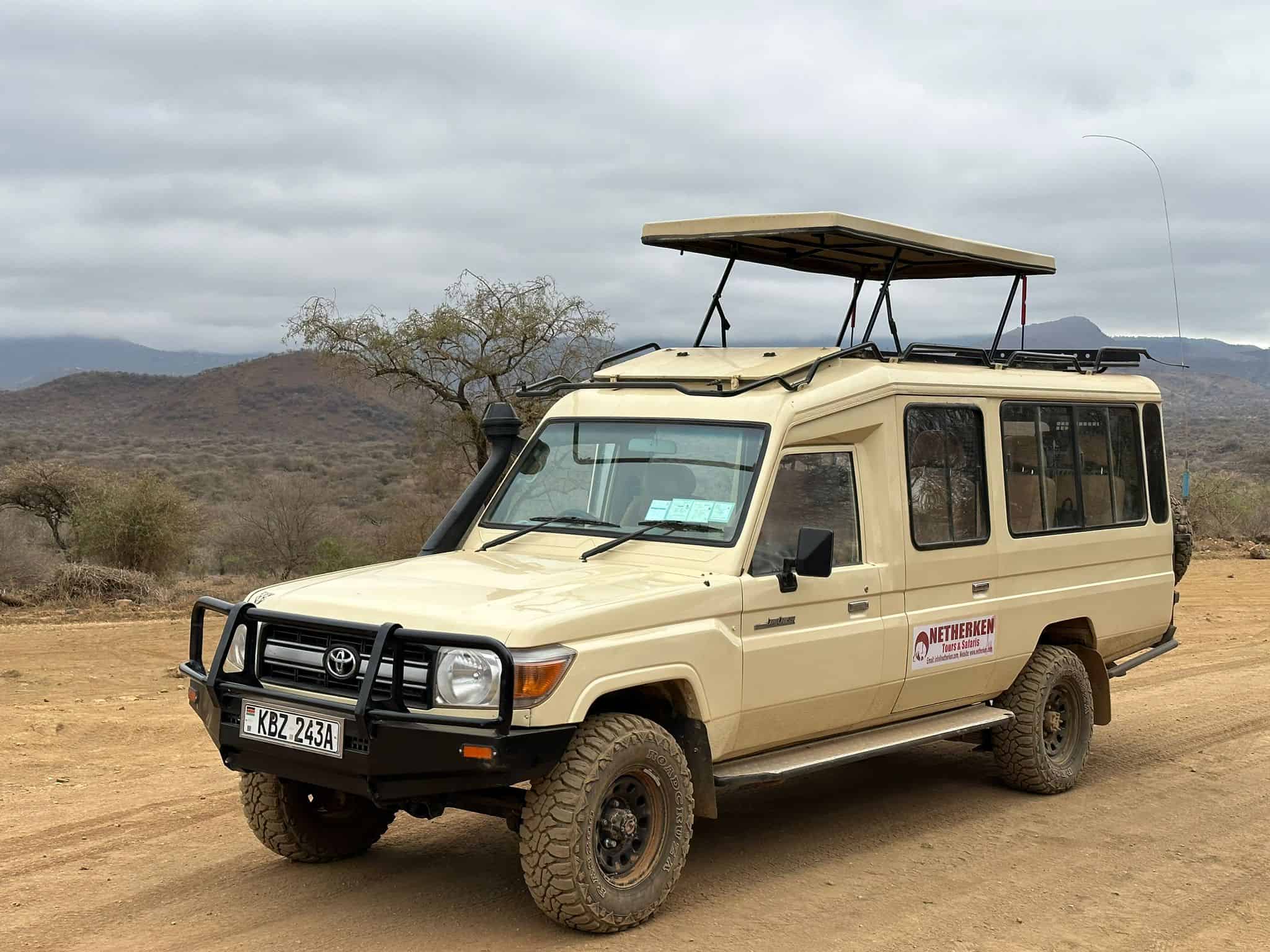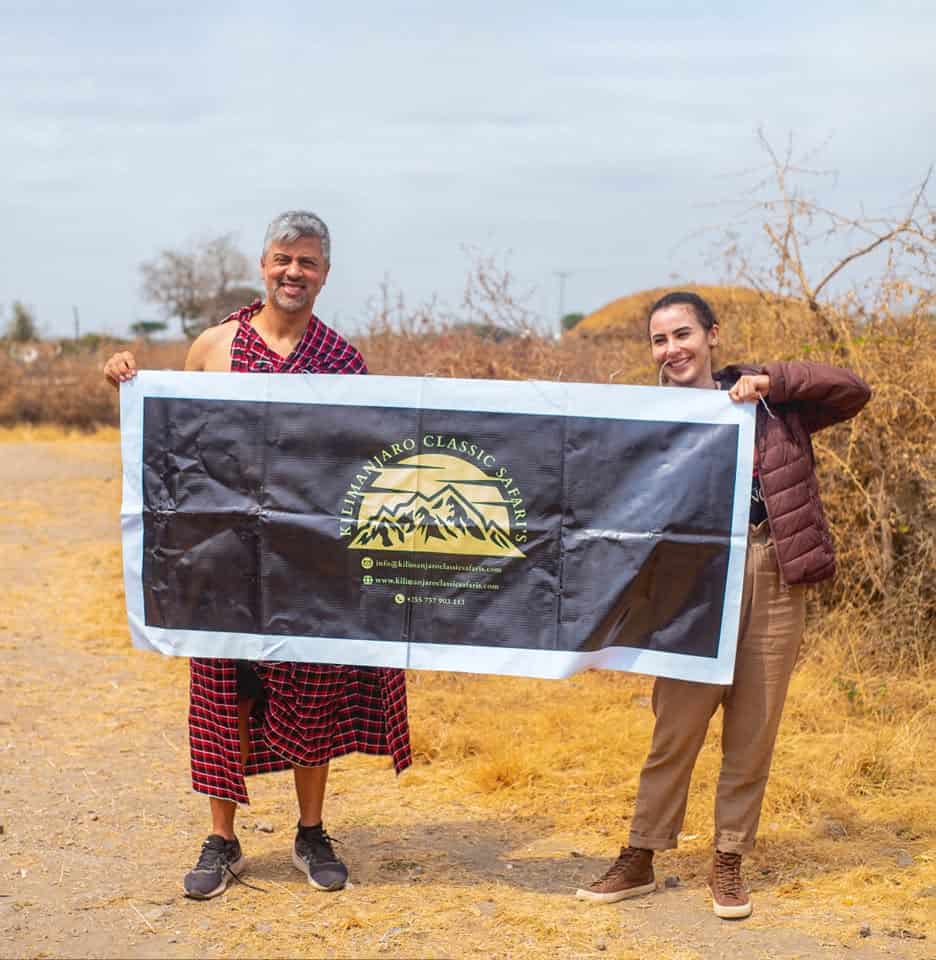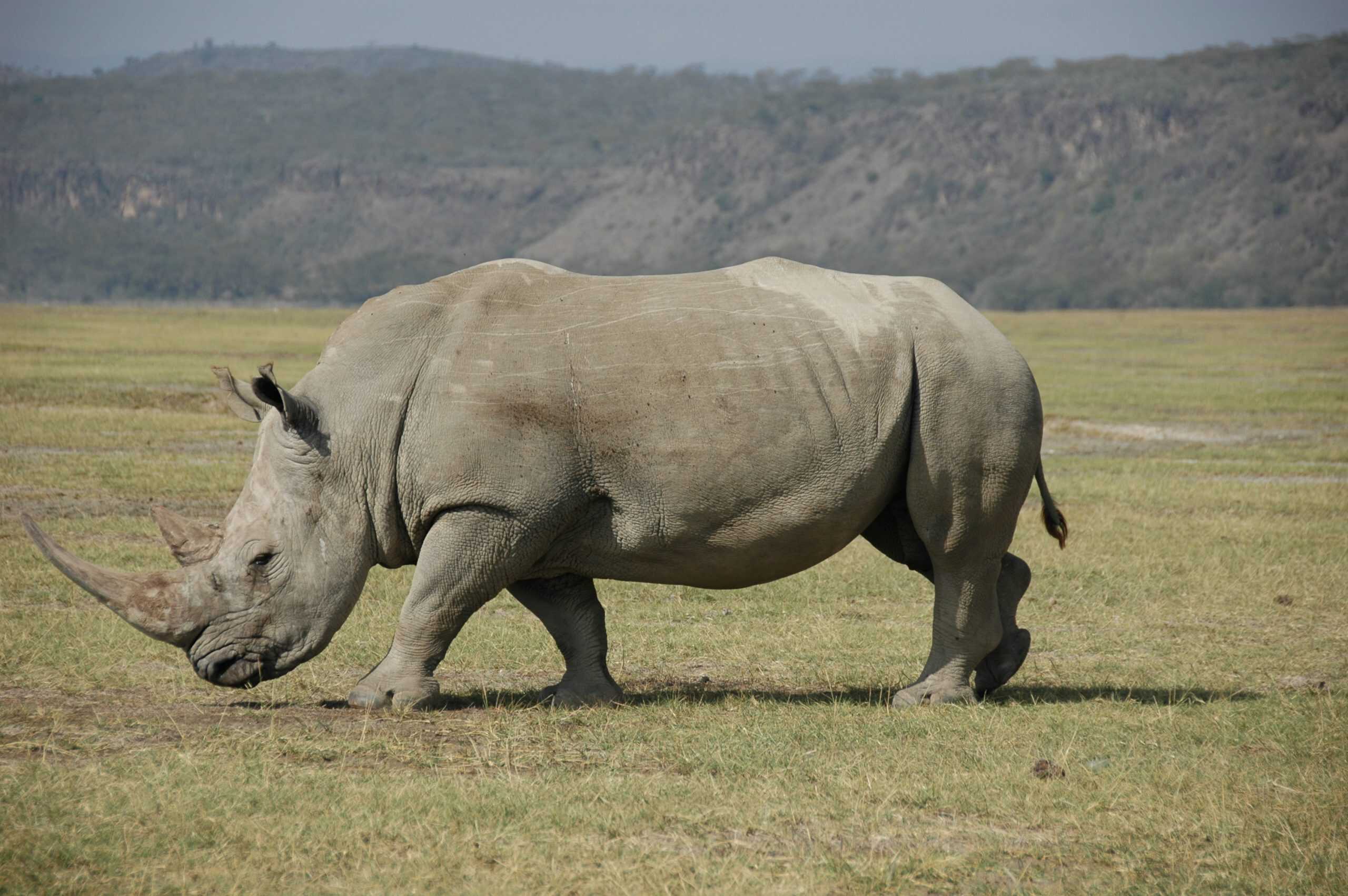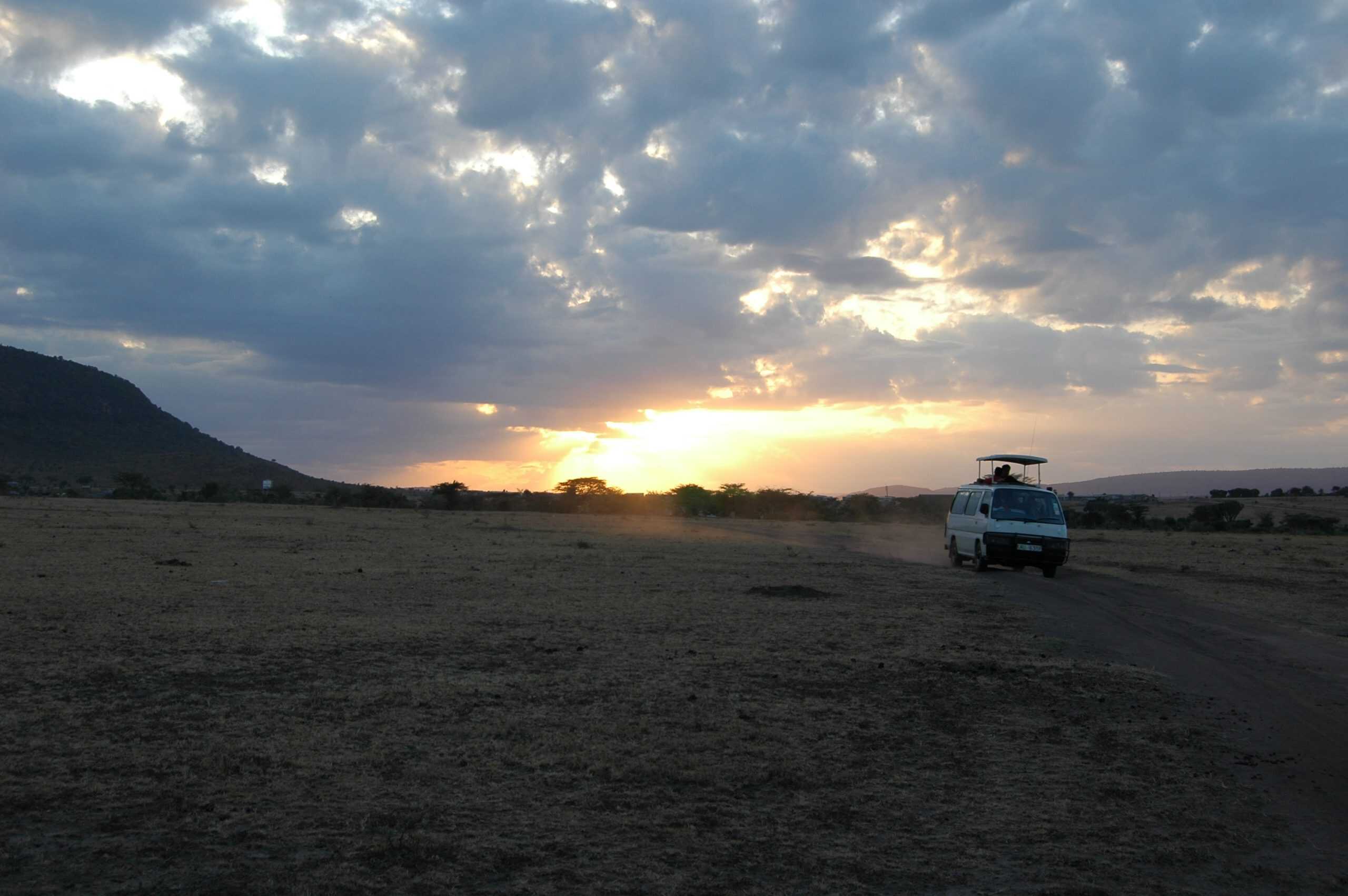 7 Days from$3590 p/p in USD
7 Days from$3590 p/p in USD DeparturesJan, Feb, Mar, Apr, Oct, Nov, Dec
DeparturesJan, Feb, Mar, Apr, Oct, Nov, Dec
Destinations
Tanzania,
Tour Type
Guided, Large Group, Small Group
Safari Standard
Mid Range
Tour Overview
This migration safari will take you to Tanzania’s Tarangire National Park, the southern and central areas of Serengeti National Park, where the majority of the wildebeest are usually found, and the world-famous Ngorongoro Crater. The Southern Serengeti and Ndutu areas in Tanzania are the best locations in the months of January, February and March to witness thousands of wildebeest spread across the plains grazing on the rich short grass plains.
General Information
- Safari types:Big Five Safari, Guided Safari, Migration Safari, Wildlife Safari
- Activities:Game Drive, UNESCO Site
- Getting around:4x4 Safari Vehicle
- Start/end:Start in Arusha, end in Arusha
- Minimum age:5
Things to do - Optional
- Visit to Masai village (extra cost)
- Mount Meru waterfall and hiking
- Chemka hot springs
- Visit Maasai market
- Visit the Cultural Heritage Center
- Walking safari in Arusha National Park
- Coffee plantations tour
Price Per Person – USD
From USD 3,590 per person, based on two sharing
Solo traveler from USD 3,520 per person
What's Included
- 4WD luxury safari vehicle
- Transfers to and from airport
- Services of a professional safari guide
- Lodge/tented camp accommodation for 6 nights
- 7 Breakfasts, 7 Lunches & 6 Dinners
- Parks & Conservation entry fees
- Unlimited mileage game drives
What's Excluded
- Flights & visas
- Tips (recommendation $10-$20 per person per day)
- Expenditure on alcoholic drinks, souvenirs and other personal items
- Travel and personal accident insurance
Disclaimer
- This itinerary is owned and delivered by ‘Furaha Tours and Safaris‘
- All prices are ‘From’ and may vary at the time of booking
- Display price is usually based on two people sharing
- ‘Furaha Tours and Safaris‘ reserves the right to change the content and price of the itinerary
- All itineraries and services are subject to availability
Day by Day Overview
In the morning you will start your safari with a drive to Tarangire National Park. The park is roughly the size of Luxemburg and covers an area of about 2,600 km². Bush savannah, seasonal swamps and giant baobab trees make up the landscape of this nature reserve and the park is probably one of the best places in East Africa to see elephants. From the open roof of the safari vehicle you will be able to watch them and absorb the landscape. Apart from elephants, the park is also home to Masai giraffes, various gazelles, antelopes, buffaloes, lions, leopards, baboons and more than 500 types of birds. After an extensive game drive you will leave the park in the afternoon and drive to your lodge.
- Overnight at Fanaka Lodge
After breakfast you will drive towards the fertile crater highlands where the Iraqw people grow wheat, corn and coffee. You will pass the Ngorongoro Crater before you reach the plains of the Serengeti National Park around midday. The Serengeti is the largest park in Tanzania and has a diversity of habitats and landscapes including short grass plains, savannah, thick bush, swamps, mountains and lakes. Bizarre rock formations called kopjes dot the grassy landscape where predators are often seen. During the short rainy season in November and December the herds move from the hills in the north to the plains in the south. During the longer rainy season from April to June they return up north. This circle of life is completely dependent on the yearly rainfalls and the locations of the herds may vary from year to year but your guide will know where to find the animals and where to see them best.
- Overnight at Osero Serengeti Tented Camp
After breakfast, enjoy game viewing drive along the Songore River Circuit, which loops into the plains south of the Seronera River, and which is good for possible lion, Thomson’s gazelle, topi, ostrich and cheetah sightings. The Visitor Centre close to the Serengeti Seronera Lodge and public campsites is well worth a visit after the morning’s game drive. In the afternoon, you will follow the Kopjes Circuit, which goes anti-clockwise around the Maasai Kopjes, which usually attract a number of lion and some formidably large cobras. Kopjes are weathered granite outcrops, scattered around the plains, most of which are miniature ecosystems, providing shade and drinking water in pools left in the rock after the rains. This makes the kopjes particularly good for spotting wildlife in the dry seasons – including lions, which like to lie in wait for animals coming to drink. Back to the same tented camp for overnight.
- Overnight at Osero Serengeti Tented Camp
After breakfast we will depart to the Lake Ndutu area situated in the Ngorongoro Conservation Area, Part of the southern Serengeti ecosystem. There you will spend one day. Lake Ndutu is alkaline like most of the other rift lakes, however the water is still drinkable and used by a wide array of local wildlife. The majority of the wildebeest migration can normally be found on the short grass plains from December to April. The area is usually heavily populated with elephants, birds and resident game. Explore the range of different habitats that include swamps, woodland, soda lakes and the world famous Serengeti short grass plains. See great herds of wildebeest and zebra. You will do a game drive till late afternoon then slowly heading to
- Overnight at Ndutu Heritage Migration Camp
After our hearty breakfast we head out to enjoy a full day game drive in the Ndutu region. We endeavour to explore the range of different habitats found here that include swamps, woodland, soda lakes, and the world famous Serengeti short grass plains. We will see the awesome sight of the great thronging herds of wildebeest and zebra. During a short time frame around February, normally lasting for about 3 weeks, the majority of the wildebeest calve, dropping in the region of half a million young in this awesome act of synchronized birthing. The sea of grass provides little cover and the young are easy pickings for a variety of predators, with cheetah being particularly active, alongside simba or leo panthera, our friend the lion, hyena, and the illusive leopard. Wildebeest calves can run minutes after they are born and within 3 days they are normally strong enough to keep up with the herd.
- Overnight at Ndutu Heritage Migration Camp
We will have an early departure from camp to heading the Ngorongoro Crater. We will descend into the crater as our game drive with a picnic lunch is inside the crater. The Ngorongoro Crater is an immense, unbroken caldera that was formed when a volcano erupted millions of years ago. The elevated structure encourages the animals subside within the crater which means there is a high possibility of spotting every member of ‘The Big 5’. The powerful group comprises of buffalo, lions, rhinos, elephants and leopards. You can expect to see other wildlife including zebra, hippos, wildebeest and hyenas. The flamingos will lounge gracefully on the banks of the Soda Lake whilst the vultures can be found scavenging for the discarded prey of a predator. Geese and storks are amongst some of the other bird species. Later in the afternoon you will ascend to the Crater rim and heading to Karatu for dinner and overnight.
- Overnight at Ngorongoro Corridor Lodge
After breakfast depart to Lake Manyara National Park which is famous for its tree-climbing lions as well as baboons, giraffes, elephants, hippos and much more. Later leave the park and heading to Arusha via Masai village, where you will be guided by a Maasai Chief, who will show you the village, how the Maasai live, their habits, how they cook, how they take care of livestock, what and how they study, dance, etc. Opportunity to watch the village women perform a local traditional dance. The whole experience provides fantastic photo opportunities. Thereafter you will head back to Arusha.
Login to your account
Register as a traveller if you are looking for deals
Register as a travel partner if you offer amazing safaris


